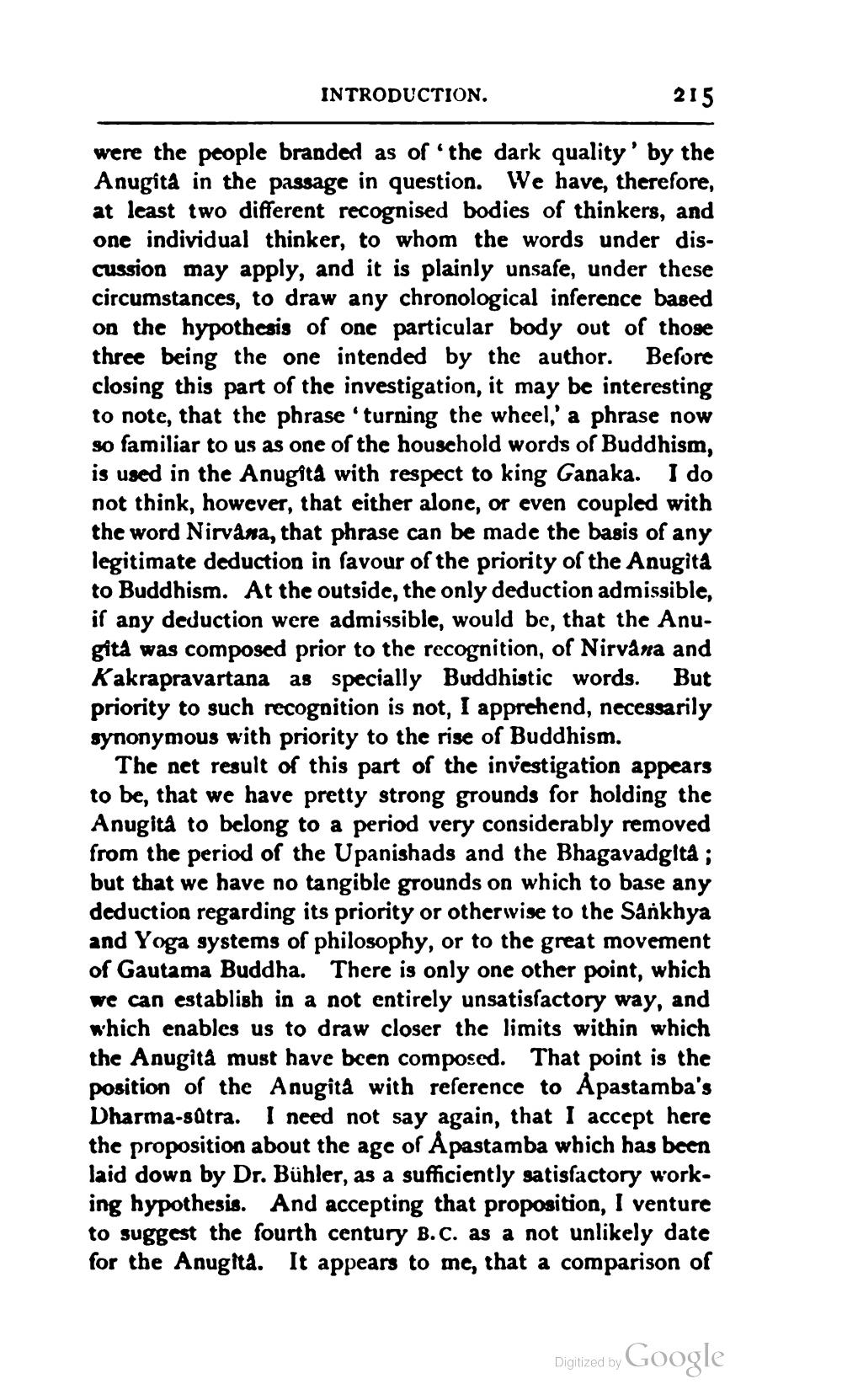________________
INTRODUCTION.
215
were the people branded as of the dark quality' by the Anugita in the passage in question. We have, therefore, at least two different recognised bodies of thinkers, and one individual thinker, to whom the words under discussion may apply, and it is plainly unsafe, under these circumstances, to draw any chronological inference based on the hypothesis of one particular body out of those three being the one intended by the author. Before closing this part of the investigation, it may be interesting to note, that the phrase "turning the wheel,' a phrase now so familiar to us as one of the household words of Buddhism, is used in the Anugita with respect to king Ganaka. I do not think, however, that either alone, or even coupled with the word Nirvana, that phrase can be made the basis of any legitimate deduction in favour of the priority of the Anugita to Buddhism. At the outside, the only deduction admissible, if any deduction were admissible, would be, that the Anugita was composed prior to the recognition, of Nirvana and Kakrapravartana as specially Buddhistic words. But priority to such recognition is not, I apprehend, necessarily synonymous with priority to the rise of Buddhism.
The net result of this part of the investigation appears to be, that we have pretty strong grounds for holding the Anugitá to belong to a period very considerably removed from the period of the Upanishads and the Bhagavadgita ; but that we have no tangible grounds on which to base any deduction regarding its priority or otherwise to the Sankhya and Yoga systems of philosophy, or to the great movement of Gautama Buddha. There is only one other point, which we can establish in a not entirely unsatisfactory way, and which enables us to draw closer the limits within which the Anugità must have been composed. That point is the position of the Anugitá with reference to Apastamba's Dharma-stra. I need not say again, that I accept here the proposition about the age of Apastamba which has been laid down by Dr. Bühler, as a sufficiently satisfactory work. ing hypothesis. And accepting that proposition, I venture to suggest the fourth century B.C. as a not unlikely date for the Anugita. It appears to me, that a comparison of
Digitized by Google




